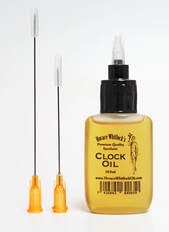 Model train oil is a specialized lubricant that is used to keep model trains running smoothly. Whether you're a serious model railroad enthusiast or just starting out, proper maintenance of your train is critical to ensure its longevity and functionality. In this article, we'll explore the importance of model train oil and the various types available. Why is model train oil important? Model train oil is important because it helps to lubricate the gears, bearings, and other moving parts of your train. This lubrication reduces friction and prevents wear and tear, which is especially important for those who operate their trains frequently. Without proper lubrication, your train may not run as smoothly, and over time, may even stop working altogether. Another benefit of using model train oil is that it helps to keep the train quiet. Friction can cause noise, and regular application of oil can reduce noise levels. This is particularly important if you're setting up a train display in a quiet environment, like a library or a museum. Types of model train oil There are several types of model train oil available on the market, and it's important to choose the right one for your specific model train. Here are some of the most common types of model train oil:
When applying model train oil, it's important to use a small amount and to apply it directly to the moving parts of your train. It is best to use precision oiler needles to ensure that the oil is applied precisely where it's needed. Blunt oil dispensing needles come in may sizes. If you use a large size dispensing needle you run the risk of adding too much lubricating oil to the spot you are trying to lubricate. It is best to use a small gauge needle around a 22 gauge - 24 gauge dispensing needle. Make sure you use a blunt dispensing needle and not a sharp ponied one for your safety. When adding oil to any mechanical equipment keep in mind that if you add too much lubricating oil, the lubricating oil will start to run out of the spot you just oiled, once it starts to run the lubricating oil will act like a siphon and will start to pull all the fresh (and old if there is any ) lubricating oil out, leaving your model train running dry. It's also important to clean your train regularly and to remove any excess oil that may have accumulated, mixing fresh new lubricating oil with dirty old lubricating oil will result in your new lubricating oil breaking down and drying out faster. Conclusion Proper maintenance of your model train is critical to ensure its longevity and functionality. Using the right type of model train oil can help to keep your train running smoothly and quietly. By following the tips outlined in this article, you can effectively apply oil to your model train and ensure that it continues to run smoothly for years to come.
0 Comments
Leave a Reply. |
AuthorBob Bartow Archives
January 2024
Categories |
 RSS Feed
RSS Feed